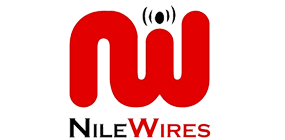State House Launches Four-Acre Model Farm For Small-Scale Farmers in Lango

The State House has endorsed the establishment of a four-acre model aimed at training farmers in the Lango sub-region on maximizing the use of small plots of land to generate significant income.
Jane Barekye, the State House comptroller, emphasized the model’s goal of assisting farmers in augmenting household revenue, particularly those with limited land resources.
“It aims to demonstrate how even a small plot of land can be utilized to generate substantial earnings,” Barekye explained.
The four-acre model farm is situated at the Lango Presidential Industrial Hub in Ayere Cell, Lira City West Division, Lira City, one of the 19 Presidential industrial hubs established nationwide.
Barekye further elaborated, “This four-acre model that we have established here is designed to educate individuals on farming techniques conducive to profit generation from limited land resources.”
Dr. Chris Ocen, a commissioner at State House overseeing the project, revealed plans to replicate the four-acre model across the remaining 18 hubs in the country. He underscored the President’s initiative to empower low-income earners, particularly small-scale farmers, to harness their land for commercial viability.
“The President’s vision is to enable individuals to maximize the potential of even the smallest land holdings for economic gain,” Ocen stated.
The Lango hub now boasts a dairy unit, a fish pond, and an acre designated for coffee and matooke cultivation.
The dairy unit will be stocked with Friesian cows, while the fish pond will accommodate 10,000 fingerlings.
“In Uganda, especially in the north, many individuals own at least four acres of land on average. However, traditional farming methods often yield meager returns, such as with simsim cultivation, where farmers may only earn 50,000 shillings after four months,” Ocen pointed out.
Ocen argued that traditional farming practices are insufficient in alleviating poverty, prompting the President’s initiative to promote commercially viable enterprises like the dairy unit, which yields daily income.
“With the current price of milk at 2,000 shillings per liter, the five Friesian cows in the dairy unit are expected to produce 20 liters each daily, totaling 100 liters collectively. This translates to a daily income of 200,000 shillings. Extrapolating to a monthly income of 6 million shillings and an annual income of 72 million shillings from just one acre of land,” Ocen elaborated.


Comments are closed.